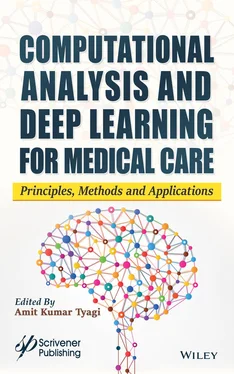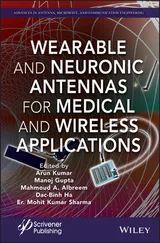3 When query suggestions are unambiguous,
4 When query suggestions are generalizations or error corrections of the original query, and
5 After the user has clicked on several URLs in the first search result page.
The search engines are working to provide better query suggestion input, and that they should dynamically provide query suggestions according to the user’s current state. There are different types of approaches for keyword query suggestion. This can be classified into three categories: random walk–based, cluster-based, and learning to rank approaches. We briefly review the other methods from our observation; any of the given methods cannot consider the user location in query suggestion.
2.3.1.1 Random Walk–Based Approaches
This method uses graph structure for modeling the information that is provided by query log and then applies the random walk process on graph for query suggestion [6, 7, 10, 11].
2.3.1.2 Cluster-Based Approaches
In this method, the query log is viewed as query URL bipartite graph [2]. By applying the clustering algorithm on vertices in the graph, query cluster can be identified. Then, user supplied query q and queries that belong to same cluster as q does not returned to the user as suggestion.
2.3.1.3 Learning to Rank Approaches
This approach is trained based on different type of query features like query performance prediction [14]. Given query q, a list of suggestion is produced based on their similarity to q in topic distribution space. Query recommendation is a core task for large industrial search engines. The query recommendations is mostly depends on the query similarity measures. These measures can be used for query expansion or query clustering.
2.3.2 User Preference From Log
Based on the user queries, the refinement is done using three functions: these are shown in Table 2.2.
1 Modification of the user query
2 Expansion
3 Deletion
Modification: user modifies the last term of the query [12]:
{wi1, …wim} → {wi1, …w′im}, e.g., “single ladies song”→“single ladies lyrics”.
The formation is done based the document frequencies and their proximities.
Expansion: user adds one term to the end of the query:
{wi1, …wim} → {wi1, …wim, wi(m+1)}, e.g., “sports illustrated” → “sports illustrated 2010”.
Table 2.2 Three types of user refinement of queries.
| Type |
User activity |
Pattern |
| Modification |
1. q:{single ladies song}2. q:{single ladies lyrics} 3. URL click |
Song → lyrics |
| Expansion |
1. q:{sports illustrated}2. q:{sports illustrated 2010}3. URL click |
ɛ → 2010 |
| Deletion |
1. q:{ebay auction}2. q:{ebay} 3. URL click |
auction → ɛ |
Deletion: user removes the last term of the query:
{wi1, …wi(m−1), wim} → {wi1, …wi(m−1)}, e.g., “ebay auction” → “ebay”.
These keyword query refinements help the user to get the appropriate results of the user search.
2.3.3 Location-Aware Keyword Query Suggestion
Query suggestion is not based on the keyword, as the preferences have been changed with the location refinements. Here, the location of the user makes the change in the formation of the query.
{feeling hungry, hotel near me} → {Hotel + Location}
The formation of the query has changed based on the location of the user only; it would not search the entire city or the country. It takes the search for nearby proximity only. It makes the query more effective.
2.3.4 Enhancement With AI Perspective
In this approach, we consider every aspect of the user that helps us in making the content specific to the user. In the current era of smartphones, we have a greater chance of knowing the user more. With the request to access the user’s location, contacts, images, messages, etc., we can have a complete picture of where the user has been to, what he likes, what is his/her daily schedule, what he might be interested in, and what he can afford for. All the above information solves half the problem of personalization. Within the search engine or website, we also track users’ search history and his choice of websites depending on the click-throughs. For each query, AI enhances ranking factors that change from query to query, as the algorithm learns from how people choose search results and decides on the best-factors to take into account for every search. The next action of AI-powered search will always be better than the present one as it learns from the user and gets auto-tuned to his choice. By adding the AI content in the module the query becomes like this.
{Feeling hungry, hotel near me} → {Hotel + Location + user preferences (vegan/Continental)}
AI added the user preferences from the past data of the user, which makes him more effective results. There is a lot of difference between how human thinks of and how a naive system analyzes. Quoting the example, considering reviews—a person commented “Director who thought this movie would be a huge success should be careful”. The system may be mistaken it to be a good review but analyzing it properly is not supportive. This is where the AI can handle it well as it does not just consider words but takes meaning and sentiment. As part of the AI usage, the Google maps gives the time to take to travel from home to office based on GPS; it learns the data based on the user location and timings over a while.
Figure 2.3represents the pictorial representation of the AI-powered system. Quoting the example of a person whose location has been one same metropolitan city for the long time and suddenly books a ticket to Bangalore. The user may search a location in Google maps from all these, and the AI component will learn where exactly the user is going and how long he will be there. Now, the AI system should be able to track the user’s new location and send him the notifications of the best suitable closest options to him like hotels, restaurants, and places to visit based on his salary, expenses, food habits, reviews on the previous stay, etc. Every possible factor should be considered with the access to user’s location, messages, profile, etc. Within his budget, the AI component can recommend hotel to him with appropriate location and price. It will save him lot of time, in many of the cases user may miss some of these, but the AI component will consider all aspects and recommends the suitable based on building the appropriate query to the user. The system should learn from the user’s feedback and become adaptive to the user in a better way.

Figure 2.3 AI-powered location-based system.
The enhancement that can be bought with AI:
1 Personalization
2 Sending Adaptive Notifications
3 Analyzing
4 Reduce labor at routine jobs
2.3.4.1.1 Personalization
This is our top priority and sole reason for our success. Analyzing the user should not be restricted to the platform in which our AI is being deployed. We should understand users and engage with them, anywhere and at any time, i.e., like accessing messages or the usage of Google maps or any other application with permission from user.
2.3.4.1.2 Sending Adaptive Notifications
Читать дальше













